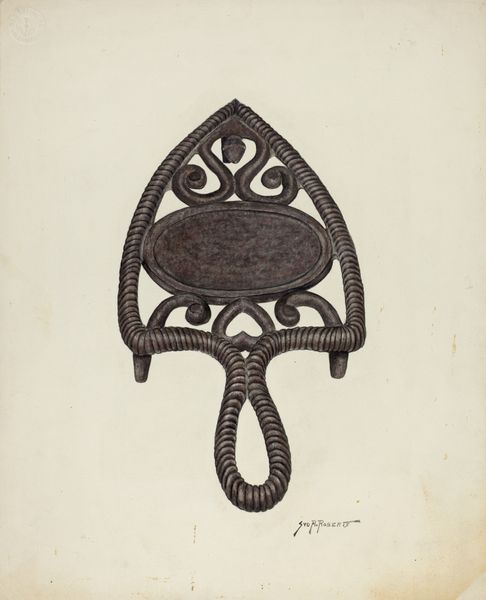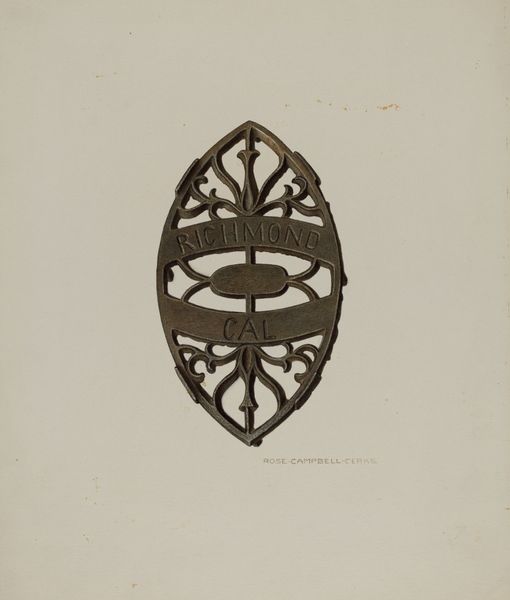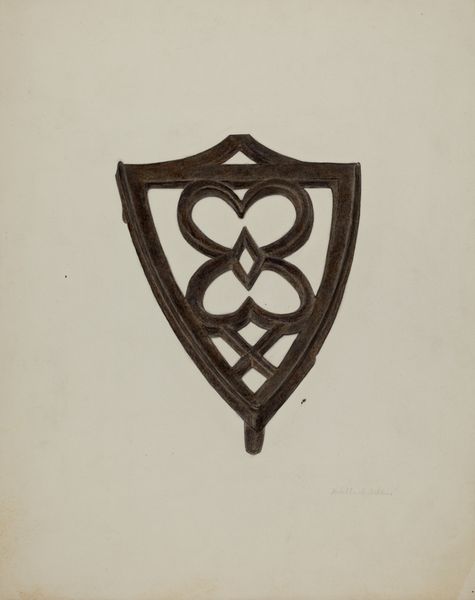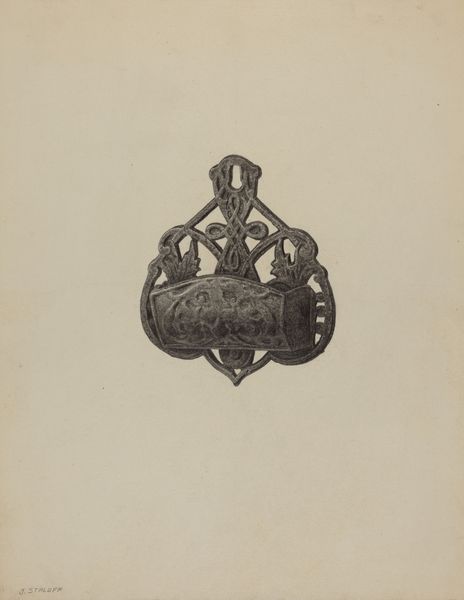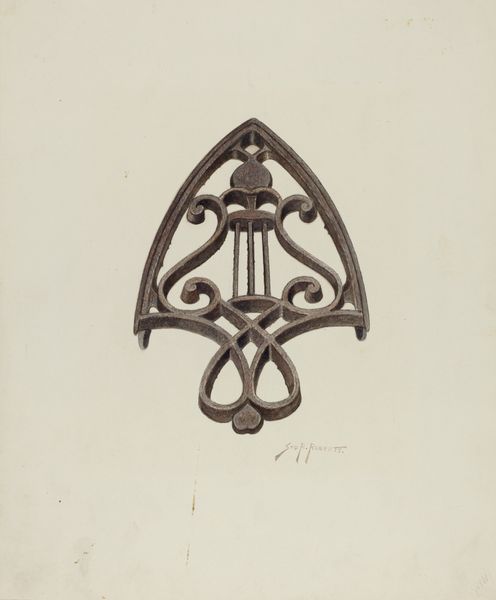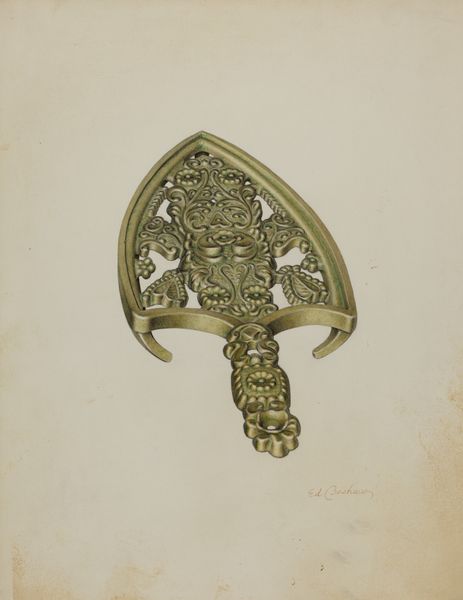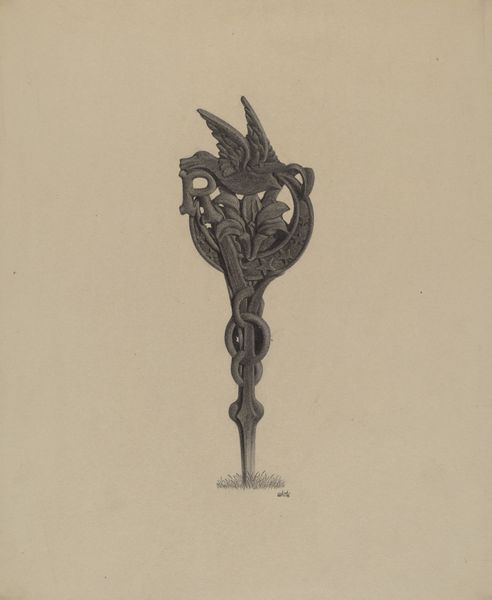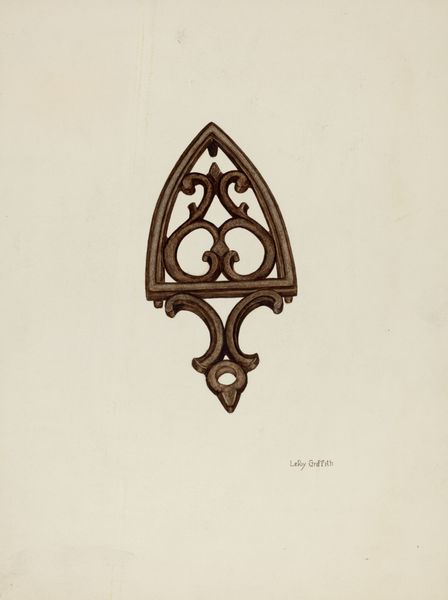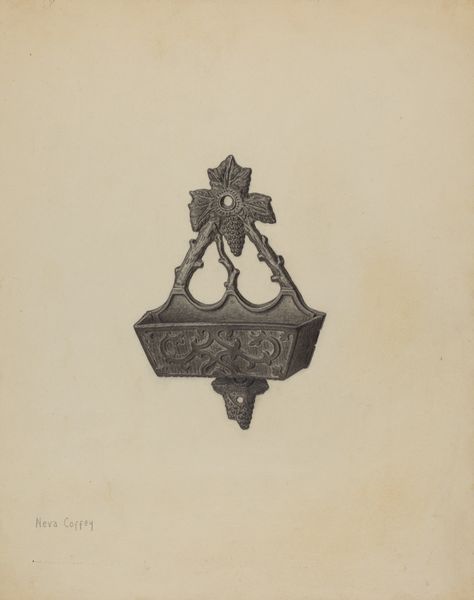
drawing, pencil, graphite
#
drawing
#
pencil
#
graphite
#
realism
Dimensions: overall: 36.6 x 28.4 cm (14 7/16 x 11 3/16 in.)
Copyright: National Gallery of Art: CC0 1.0
Editor: This drawing, called "Trivet" by Ardella Watkins, dates to around 1942 and is made with pencil and graphite. It's so detailed and realistic. What strikes you when you look at it? Curator: It's interesting how Watkins chose to depict such a mundane object. We should consider the material realities here. A trivet exists to protect surfaces from heat – a practical tool of domestic labor. Editor: So, you see it as a commentary on domestic work? Curator: Not just that, but on the materials and processes behind the trivet itself. Someone designed and produced this object. Watkins, in turn, renders that labor in her own way, with graphite. There's a chain of production, isn't there? Think of where the materials come from for each stage: the trivet, the graphite. How labor-intensive these stages may or may not be. The value is interesting. What do you think she is trying to convey? Editor: I suppose she’s drawing attention to the unseen labor that supports our everyday lives. It makes me wonder who designed the original trivet and how mass production affects artistic value. Is the drawing worth more than the trivet itself? Curator: Exactly. We elevate the "art" but often ignore the design and manufacturing involved in even simple, functional items. Editor: I never considered looking at art this way! Thinking about the labor and material history adds a whole new layer to something as simple as a trivet drawing. Curator: Indeed. It forces us to question the boundaries between art, craft, and industry. The making of the trivet, the means through which Watkins then renders it. A reflection of all labor and design processes, from its physical making, all the way through this moment.
Comments
No comments
Be the first to comment and join the conversation on the ultimate creative platform.

